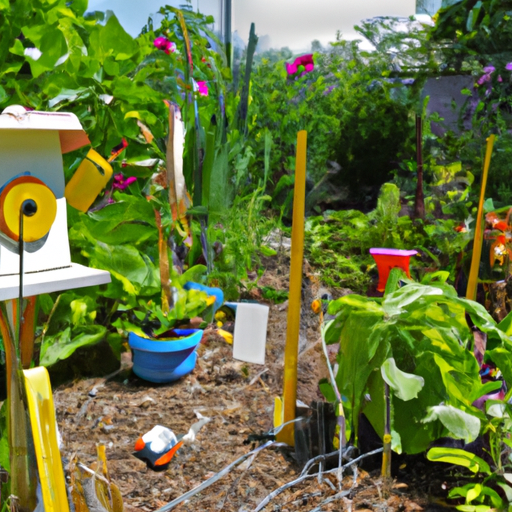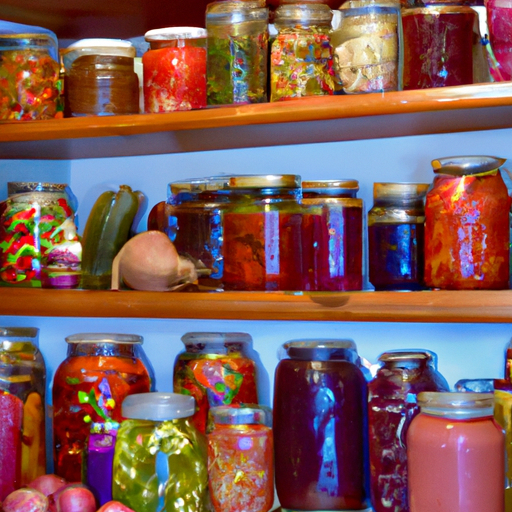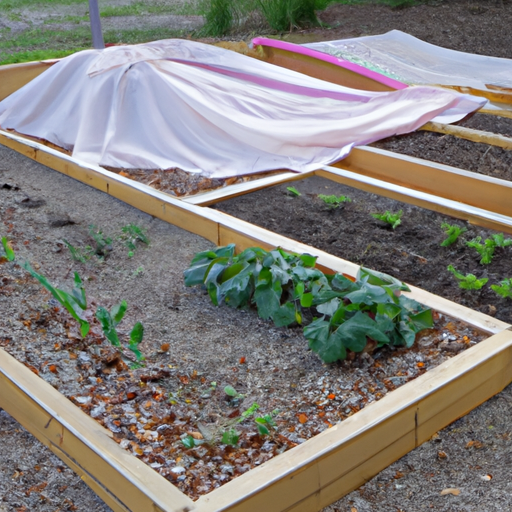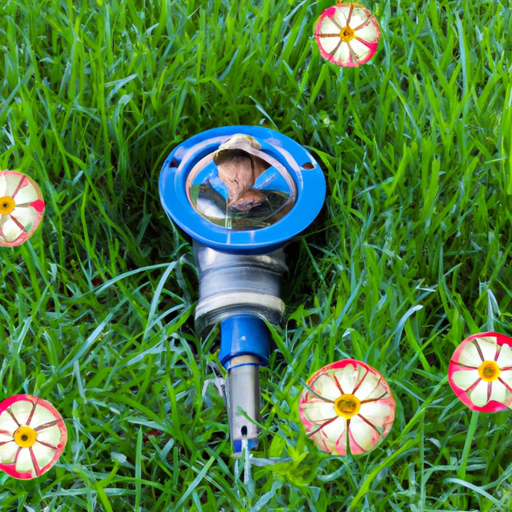Hey there, fellow gardeners! As Master Gardeners, we all know the importance of organic pest control. Not only does it protect our plants from harmful chemicals, but it also keeps our gardens healthy and sustainable for years to come.
One effective method of organic pest control is using traps and baits. These tools can help us target specific pests without harming beneficial insects or disrupting the natural balance in our gardens.
In this article, we’ll explore different types of traps and baits that you can use to keep your garden thriving without relying on harsh pesticides.
So grab a cup of tea and let’s dive into the world of organic pest control!
Understanding Organic Pest Control
Organic pest control is like a dance between nature and nurture. It’s about understanding the ecosystem in which you live, identifying pests that affect your garden or crops, and taking steps to keep them at bay without using harmful chemicals.
Natural deterrents such as companion planting, crop rotation, and beneficial insects are great ways to discourage pests from invading your space. Pest-resistant plants can also be incorporated into your garden design to make it more difficult for unwanted critters to find their way in.
As a Master Gardener, I believe that organic pest control not only protects the environment but also benefits our health by providing chemical-free produce.
Let’s explore how we can use traps and baits as effective tools alongside these natural methods to combat pesky invaders without causing harm to ourselves or the planet.
The Importance Of Using Traps And Baits
As we have discussed in the previous section, understanding organic pest control is crucial for maintaining a healthy and thriving garden.
One of the most effective eco-friendly alternatives to traditional pesticides are traps and baits. These natural pest repellents work by attracting insects with their scent or visual appearance, then trapping them or poisoning them with bait.
Traps can be used for both monitoring purposes and as a means of controlling pests populations by capturing large numbers of insects at once. Baits, on the other hand, are placed near areas where pests are known to feed and act as an attractive food source that contains poison.
While these methods may require some patience and diligence, they are highly effective in reducing pest damage without harming beneficial insects or polluting our environment with harmful chemicals.
By incorporating traps and baits into your organic pest control strategy, you can help create a safer and more sustainable ecosystem within your own backyard.
Types Of Traps For Specific Pests
Traps can be an effective way to rid your garden of specific pests, and DIY trap making can be both cost-effective and rewarding. Different types of traps work best for different pests, so it’s important to know which kind to use.
Here are four common types of traps:
– Sticky traps work well for catching flying insects like whiteflies or fungus gnats.
– Pheromone traps utilize scent to attract male pests before trapping them in a sticky surface.
– Pitfall traps are ideal for ground-dwelling insects like cutworms or slugs that crawl into the trap and cannot get out.
– Snap traps are perfect for mice or rats as they use bait as lure and then quickly close around the rodent once triggered.
While traditional baits such as cheese or peanut butter may work with snap or live catch mouse/rat traps respectively, natural bait alternatives such as cotton balls soaked in apple cider vinegar or bacon grease can also prove useful.
Keep these tips in mind when deciding on which type of trap is right for your garden pest problem!
Baits For Luring And Controlling Pests
As a Master Gardener, I highly recommend using baits to lure and control pests in your garden.
Baits are an effective and sustainable pest management strategy that can be easily implemented with DIY bait recipes.
These homemade baits use natural ingredients like sugar, yeast, and fruit juice to attract insects such as fruit flies, aphids, and slugs.
By placing these baits strategically around your plants, you can reduce the population of damaging pests without harmful chemicals or pesticides.
Additionally, making your own baits is cost-effective and environmentally friendly.
So why not give it a try? Incorporate DIY bait recipes into your organic pest control routine for healthy and thriving gardens all season long!
Tips For Effective And Safe Pest Control
Ah, the joys of pest control! While baits can be effective in luring and controlling pests, there are other natural remedies that you can try to prevent them from infesting your garden.
As a Master Gardener, I always recommend DIY solutions first before seeking professional help. Here are some prevention measures that you can take:
– Keep your garden clean and tidy by removing debris and fallen leaves regularly
– Use companion planting to deter pests naturally
– Encourage beneficial insects like ladybugs and praying mantis to thrive in your garden
– Introduce physical barriers like netting or row covers to protect vulnerable plants
However, if all else fails and you need professional help with pest control, make sure to choose an eco-friendly company that uses non-toxic methods.
Remember, prevention is key when it comes to maintaining a healthy garden ecosystem.
Frequently Asked Questions
Are There Any Specific Types Of Plants That Can Repel Pests Naturally?
Companion planting is a technique that has been used for centuries to naturally repel pests from gardens. Certain plants, when grown together, can help keep harmful insects away and promote healthy growth in neighboring crops.
For example, marigolds are known to deter nematodes and whiteflies when planted near tomatoes or cucumbers. Essential oils extracted from aromatic herbs such as lavender, mint, and rosemary have also proven effective in warding off unwanted visitors.
Incorporating these natural remedies into your garden’s design can not only enhance its beauty but also provide an eco-friendly way of protecting your plants from harm.
Can Traps And Baits Be Used Together For Better Pest Control?
Combining techniques is a powerful way to tackle pest control in your organic garden.
When it comes to traps and baits, using them together can create synergy effects that significantly enhance their effectiveness.
By placing different types of traps strategically around your garden alongside bait stations, you’ll be able to target pests from multiple angles, increasing the chance of eliminating them altogether.
The key is knowing which combination works best for each type of pest and tailoring your approach accordingly.
As a Master Gardener, I highly recommend exploring these options as part of an integrated pest management strategy for optimal results.
How Often Should Traps And Baits Be Checked And Replaced?
When it comes to effective pest control, it’s important to keep up with the frequency checking and replacement timeframes of your traps and baits.
Regularly monitoring these tools will help ensure that they are still working properly and catching any pesky critters that may be lurking around your garden.
As a Master Gardener, I recommend checking your traps and baits at least once a week during peak pest season, and replacing them every 2-4 weeks depending on how much activity you’re seeing.
By staying on top of these tasks, you can stay ahead of any potential infestations and keep your garden thriving.
Are There Any Homemade Trap Or Bait Recipes That Are Effective?
Looking for DIY pest control solutions? You’re in luck! There are plenty of effective homemade trap and bait recipes that can help keep pests at bay.
For example, you can make a simple fly trap using apple cider vinegar and dish soap. Or try making a garlic spray to repel aphids from your plants.
Natural repellents like these not only save money but also avoid the use of harmful chemicals. As a Master Gardener, I always encourage trying out different methods until finding what works best for your specific pest problem.
What Precautions Should Be Taken When Using Traps And Baits Around Children And Pets?
When it comes to using traps and baits for pest control, there are a few important precautions to keep in mind.
First and foremost, it’s crucial to always read the label carefully before using any product. This will not only ensure that you’re using it correctly but also help you identify any potential hazards or warnings specific to that particular trap or bait.
Additionally, make sure to store all products out of reach of children and pets, preferably in a locked cabinet or area.
Finally, consider placing the traps or baits in areas where your pets and children won’t have access, such as high shelves or behind closed doors.
By taking these safety measures seriously, you can effectively control pests without risking harm to those around you.
Conclusion
In conclusion, utilizing traps and baits can be an effective organic pest control method for your garden. By combining different types of traps and baits, you can increase the effectiveness of your approach. Checking them frequently is crucial to ensure that they are working optimally.
While there are homemade trap recipes available online, it’s important to research thoroughly before trying any out as some may not be safe or effective. Taking precautions when using traps and baits around children and pets is also highly recommended.
As a Master Gardener, I suggest experimenting with various methods until you find what works best for your specific situation. With patience and persistence, you will see results in no time!
Remember to always prioritize safety while enjoying the fruits of your labor. Happy gardening!






